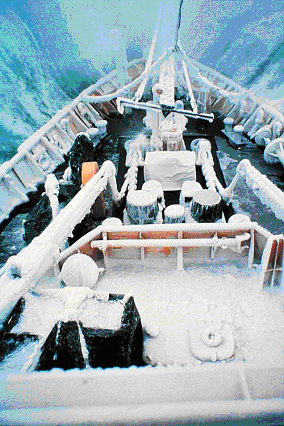 Weather Work and Transportation
Weather Work and Transportation
Student Interviews: Driving in the Storm of the Century October 31, 1991
|
Safe travel depends on good weather. You certainly know this if you have ever spun-out on an icy road. The stories in this section, collected by students in Russ Bailey's class from Northwestern Middle School in Poplar, all involve traveling in bad weather. These travels often were work related, one while working on a cruise ship, another driving a delivery truck and the third while working with on highway construction project. Good road conditions are important for travel, and snow and ice make roads slippery and hazardous to drive. A heavy snowfall can immobilize any city, while even a couple of inches can paralyze towns where snow is infrequent. An ice storm, a familiar event to residents of northeastern North America, can make walking hazardous by covering everything in a veneer of slippery ice. Road conditions can be improved by applying sand mixed with salt. The grittiness of sand improves traction and the salt dissolves the frozen water by lowering the freezing point. Heavy rains can also make roads impassible, a hazard that motor vehicles drivers may overlook. Water flowing across a street can be very dangerous and should be approached with caution. The flowing water can lift the car off the road and carry it downstream, drowning the travelers inside. Weather conditions can hamper travel even when road conditions are excellent. A cold, strong headwind can turn a sunny day's leisure bicycle outing into strenuous activity. Fog, blowing snow, and blowing sand can reduce visibility to a few feet making driving treacherous. Traveling by rail or on water is not immune to the elements either. While trains are less susceptible to weather, avalanches in mountain regions can stop trains. The boating and shipping industry can be affected by the weather directly from strong winds, or from huge waves. Strong winds can batter boats causing damage topside. Large storms have generated ocean waves over 100 feet high! How ocean waves affect travel depends on the size and type of boat. Some boats are capsized by a large wave, others can take on water as the waves break over the deck. Weather conditions also affect the flow of icebergs, which are an extreme hazard to all ships and those on board.
|







